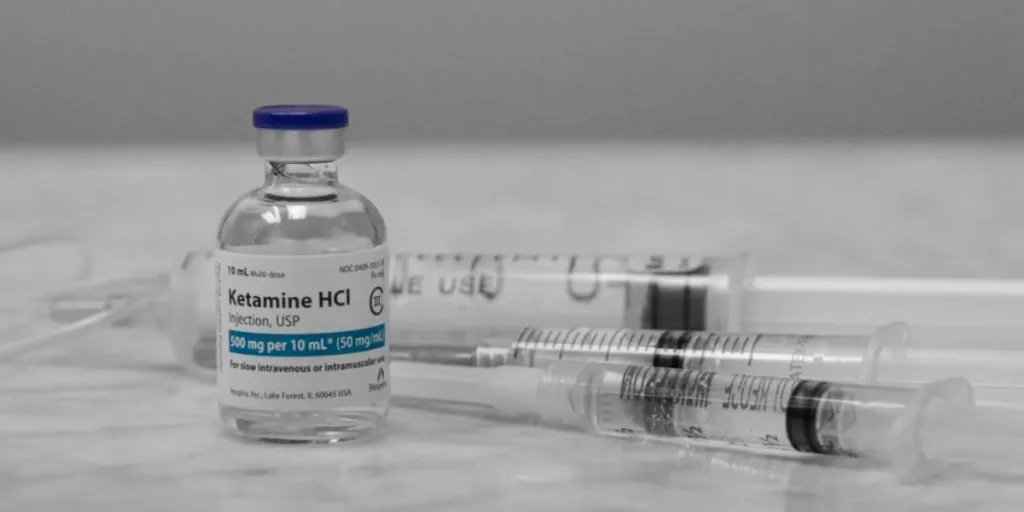Ketamine is a drug that has undergone a remarkable transformation in recent years. Once known as a battlefield anesthetic and a club drug, it has emerged as a powerful treatment for various medical conditions, from depression and chronic pain to PTSD and OCD. This article explores the fascinating history and science of ketamine, as well as the challenges and opportunities it presents for the future of medicine.
From War Zones to Rave Parties
Ketamine was first synthesized in 1962 as a safer alternative to phencyclidine (PCP), a dissociative anesthetic with dangerous side effects. Ketamine quickly proved its value as a fast-acting and effective painkiller, especially in war zones where conventional anesthesia was not available. It also became a popular veterinary drug, used to sedate animals of various sizes and species.
However, ketamine also had a dark side. Its psychedelic and dissociative effects made it attractive for recreational use, especially in the club scene. Ketamine users reported experiencing altered states of consciousness, out-of-body sensations, and vivid hallucinations. However, these effects also came with risks, such as addiction, bladder damage, and cognitive impairment. As a result, ketamine was subjected to stricter regulations and controls, limiting its medical use to emergency and pain management settings.
A Breakthrough for Depression
In the late 1990s, a surprising discovery revived interest in ketamine. Researchers studying its effects on chronic pain patients noticed that some of them also reported a dramatic improvement in their mood and outlook. Further studies confirmed that ketamine had a rapid and robust antidepressant effect, even in patients who had failed to respond to other treatments.
Depression is a common and debilitating mental disorder, affecting millions of people worldwide. It is characterized by persistent low mood, loss of interest, and impaired cognitive function. Traditional antidepressants, such as selective serotonin reuptake inhibitors (SSRIs) and serotonin-norepinephrine reuptake inhibitors (SNRIs), work by increasing the levels of neurotransmitters involved in mood regulation. However, these drugs often take weeks or months to show results, and many patients do not respond to them at all.
Ketamine, on the other hand, works by a different mechanism. It blocks the N-methyl-D-aspartate (NMDA) receptors, which are involved in glutamate signaling, a key process in neuronal plasticity and learning. By inhibiting these receptors, ketamine triggers a cascade of molecular and cellular changes that enhance synaptic connections and neural growth. This, in turn, leads to improved mood, motivation, and cognition. Moreover, ketamine can achieve these effects within hours of a single infusion, and they can last for days or weeks.

Beyond Depression: A Multifaceted Therapeutic Tool
While depression is the most widely studied and approved indication for ketamine, it is not the only one. Ketamine has shown promise in treating a range of other medical conditions, such as:
- Chronic pain: Ketamine can provide relief for patients suffering from chronic pain conditions, such as complex regional pain syndrome (CRPS) and fibromyalgia, where conventional analgesics are often ineffective or intolerable. Ketamine can reduce pain intensity, improve function, and enhance quality of life.
- Post-traumatic stress disorder (PTSD): Ketamine can help patients with PTSD, a disorder characterized by intrusive and distressing memories, flashbacks, and nightmares related to a traumatic event. Ketamine can disrupt and reconsolidate these memories, reducing their emotional impact and frequency.
- Obsessive-compulsive disorder (OCD): Ketamine can help patients with OCD, a disorder characterized by recurrent and unwanted thoughts, impulses, or behaviors that cause anxiety and distress. Ketamine can reduce the severity and frequency of these symptoms, as well as improve the response to cognitive-behavioral therapy (CBT).
- Suicide ideation: Ketamine can help patients with suicidal thoughts, a serious and potentially fatal complication of depression and other mental disorders. Ketamine can rapidly reduce suicidal ideation, as well as increase hope and optimism.
Navigating the Challenges: A Cautious Embrace
Despite its remarkable therapeutic potential, ketamine is not a panacea. It still faces several challenges and limitations, such as:
- Safety and tolerability: Ketamine can cause adverse effects, such as increased blood pressure, nausea, dizziness, and dissociation. These effects are usually mild and transient, but they can be unpleasant and distressing for some patients. Moreover, ketamine can also have long-term consequences, such as addiction, bladder damage, and cognitive impairment, especially with repeated or high doses.
- Regulation and access: Ketamine is still a controlled substance in many countries, and its use is restricted to certain settings and indications. Moreover, ketamine is not covered by most insurance plans, and its cost can be prohibitive for many patients. Additionally, ketamine requires careful monitoring and supervision by trained professionals, which can limit its availability and accessibility.
- Research and development: Ketamine is still a relatively new and novel treatment, and more research is needed to establish its optimal dose, frequency, duration, and mode of administration. Furthermore, more studies are needed to compare ketamine with other treatments, such as electroconvulsive therapy (ECT) and transcranial magnetic stimulation (TMS), and to identify the best candidates and predictors of response. Additionally, more research is needed to understand the molecular and cellular mechanisms underlying ketamine’s effects, and to develop safer and more specific analogs or alternatives.
The Future Beckons: Continued Exploration and Optimization
Ketamine’s resurgence marks a remarkable chapter in medical history. It is a testament to the power of scientific inquiry and serendipitous discovery, highlighting the potential for repurposing existing drugs for unexpected applications. With ongoing research exploring optimized dosing schedules, novel delivery methods, and potential combination therapies, the future of ketamine appears bright. As we unlock its secrets further, this multifaceted medical marvel holds the promise of revolutionizing treatments for a diverse spectrum of conditions, offering hope and healing to millions who have long suffered in silence.


